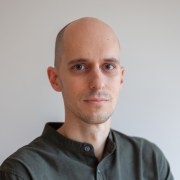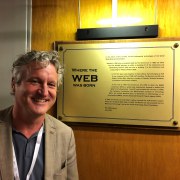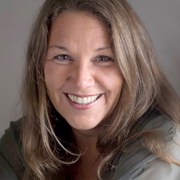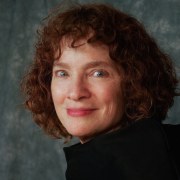Challenging our brains to come up with new ideas
As we work in the creative field we're asked to come up with new innovative ideas day after day. But is that really possible? Can we really have good and new ideas out of the blue?
In this session we go on a journey to explore the human desire for creativity. We look at the way our brains strive for new experiences but also the difficulty of having ground-breaking ideas. And last but not least we critically look at the patterns we use to create "new" ideas.
What really innovative ideas did we come up with and how did we find them? When ideas were inspired by others, what twist was applied to innovate and evolve them even further? How did we get everyone on board in our teams?
More about this session: The speakers in this reverse session show us their own ways of finding ideas and trigger an active discussion with the audience: builders, conceptors, science communicators, designers, artists or simply creators.
Session speakers
As Project director at BRUNS Maarten can give us a view on how innovative ideas truely come alive. The key is good cooperation and collective thinking. That's the only chance to make a real leap forward in our field.
Innovation statement: Bottom up creativity with a group of diverse people, using new combinations of proven stuff, can lead to innovative solutions.
Consultant for Interactive Exhibits
Working for fast-paced design agencies, the struggle of producing new ideas in no time is daily business. Not only that new ideas must be understood immediately, they also are expected to be unique. Since the wheel has been invented already, a lot of ideas turn out to be a merge of existing and new. Knowing those existing ideas is as important as drawing inspiration off them to be able to creative.
Innovation statement: Don’t be ashamed to cite, but give credits where applicable.
jh Museum & exhibition design
Inspiration, copy and the whole dilemma of original design; Although it seemed sometimes that science had revealed the last secrets, today we agree that there is no risk of understanding everything. The same is true for new ideas in creation and design: there is always reason to expect the unbelievable - even if it won’t happen in your next project.
Browsing through conceptions and realisations that radiate originality we find patterns: Context makes the difference, and the wits to add something to (or leave something from) existing designs.
Michael developed a larger number of exhibits and will reflect on the process of finding ideas. He is aware that ideas get copied. His ideas have been copied already.
Innovation statement: Should we protect our ideas and if yes how to do so.
Associate Director Exhibit Content Development
San Francisco
United States
Newton famously stated, "If I have seen further it is by standing on the shoulders of Giants”. The approach of developing new concepts by responding to and building on previous concepts is common to scientific work and can be a model for creative work. Innovation statement: An open attitude, curiosity to seek out a diverse range of approaches, and a ‘what if’ perspective can be rich starting points for an innovative process.






